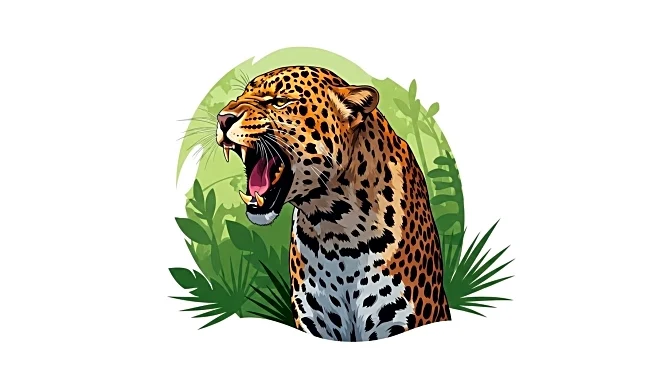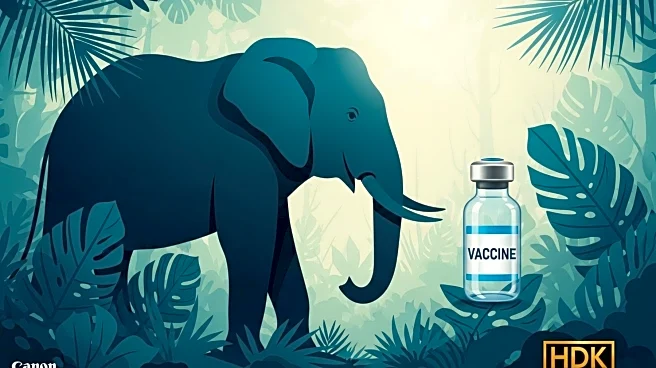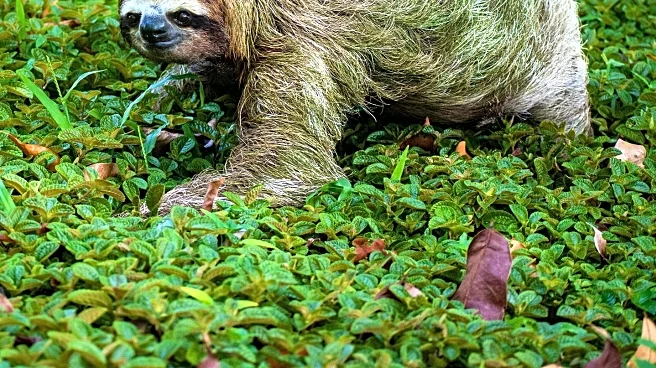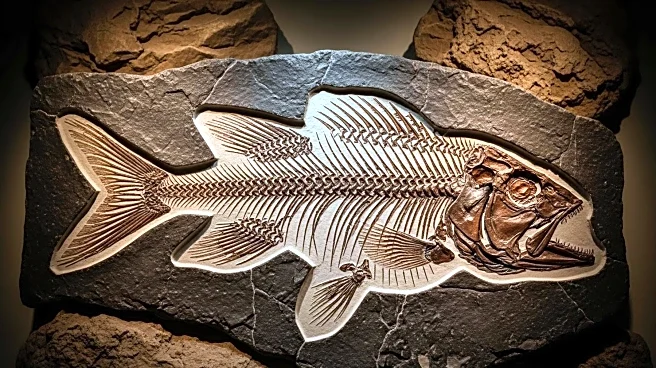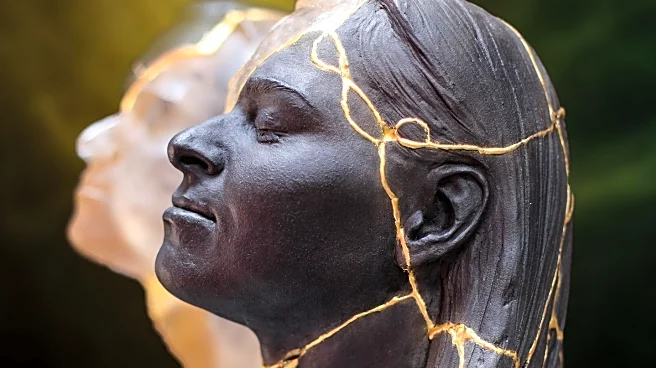What is the story about?
What's Happening?
Researchers from the University of Exeter have discovered that leopards can be individually identified by their unique roars, achieving an accuracy rate of 93%. This breakthrough offers a novel method for monitoring these solitary and nocturnal creatures, which are often challenging to study due to their elusive nature. The study was conducted across a 450 km² area in Nyerere National Park, Tanzania, where researchers used a combination of camera traps and autonomous recording devices to capture both visual and auditory data. By analyzing the temporal patterns of the leopards’ 'sawing' roars—a series of low-frequency sounds used for communication—the team successfully distinguished individual animals. Lead author Jonathan Growcott, a PhD student at the University of Exeter, emphasized the significance of this discovery, noting that it highlights how little is known about leopards and large carnivores in general.
Why It's Important?
This advancement in bioacoustic monitoring presents a non-invasive approach to studying leopard populations, facilitating more accurate population estimates and aiding in conservation efforts. Given that leopards are classified as 'vulnerable' by the IUCN Red List due to habitat loss and human-wildlife conflict, such innovative monitoring techniques are crucial for their preservation. The study also highlights the potential of integrating multiple technologies to gather comprehensive data on wildlife, enhancing our understanding of ecosystems and informing effective conservation strategies. This method could be applied to other species, potentially revolutionizing wildlife monitoring and conservation practices globally.
What's Next?
The findings from this study could lead to the development of more sophisticated monitoring systems that integrate bioacoustic data with other technologies, such as satellite tracking and genetic analysis, to provide a more comprehensive understanding of leopard populations. Conservationists and wildlife managers may adopt these techniques to improve the management and protection of leopards and other vulnerable species. Additionally, further research could explore the application of this method to other big cats and wildlife species, potentially leading to broader conservation impacts.
Beyond the Headlines
The discovery of unique leopard roars not only aids in conservation but also raises awareness about the importance of preserving biodiversity. It underscores the need for continued research and innovation in wildlife monitoring to address the challenges posed by habitat loss and human-wildlife conflict. This study also highlights the ethical considerations of using non-invasive methods in wildlife research, promoting a more humane approach to studying and conserving endangered species.
AI Generated Content
Do you find this article useful?
